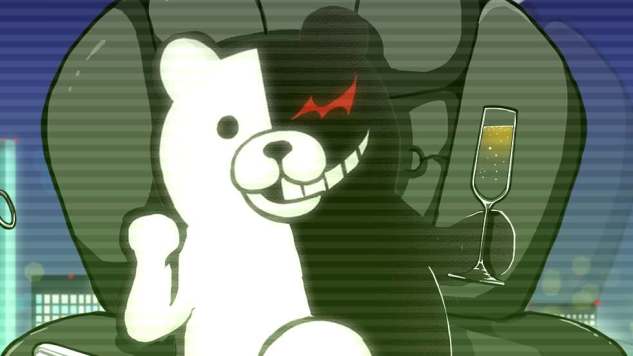
Danganronpa V3: Killing Harmony is a game built on lies, both between its cast of 16 eccentric high school students and between the game and the player. Using a new setting to bring back the same murder mystery format of the original Danganronpa games, Killing Harmony explores new themes and conflicts about the value of truth, trust and how a little lie can help move things along. The result is a game less philosophical than its predecessors, and perhaps less impactful because of it, but it shakes up dynamics in a way the series hasn’t quite touched on before.
Killing Harmony’s set up is a familiar one: 16 high school students are locked within the Ultimate Academy for Gifted Juveniles by the devious animatronic teddy bear Monokuma. These teenagers are forced to take part in a “killing game” where the only way they can escape the academy is by getting away with the murder of one of their classmates.
After a murder occurs, the students take part in a “Class Trial.” In these open forums evidence found at the crime scene and around the school is discussed, claims are refuted and sides are taken, all ultimately leading to the reveal of the murderer, who will face execution if they’re discovered. Killing Harmony’s cases are more elaborate than the first Danganronpa and more grounded and natural than the second, which hits a perfect sweet spot for logical deductions and meaningful discussion. Puzzles and mini-games that break up the conversation feel more intuitive and mechanically sound than previous entries, including updated ones like the Psyche Taxi, which had me driving down a road taking certain paths to answer questions in a clever visual metaphor, as well as new ones like the Minesweeper-esque Mind Mine that required me to clear out matching colored tiles to uncover evidence underneath.
The most notable addition comes back to Killing Harmony’s focus on lies by allowing the trial to go in different directions whether or not the player chooses to lie to shift the discussion. Conversations can get stuck on topics that require you to lie just to get everything back on track. Doing so is risky, and can backfire if you’re called out. If you use a lie to refute the wrong statement you’ll receive a greater penalty. But after talking with other players I found that whether or not you lie in a situation can branch the conversation off. The end result of the trial is the same, but we were able to trace back the point where we took different paths to get there.
If nothing else, Killing Harmony feels like a mastery of its killing game. Its clever cases, meaningful motives and gutting twists feel on par with the series’s pedigree and are all bolstered by a stylish artstyle and score. I cared about the kids at the Ultimate Academy and seeing them be picked off one-by-one was just as affecting as it’s ever been, but the shift from one setting to another feels like certain aspects that made previous games memorable and thematically profound didn’t make the jump.
Prior to Killing Harmony, the series focused on a philosophical conflict between hope and despair. This theme was consistent throughout each game and spin-off and how these two concepts clashed made Danganronpa’s emotional punch go beyond murder and deception. It gave each death and character a symbolic status in the series’s overarching narrative. This is mostly absent from Killing Harmony. While the themes of truth and lies factor into mechanics and the trials, other than in the late game twists they didn’t factor in much for the moment-to-moment of my time in the Ultimate Academy.
Beyond the less impactful themes, Killing Harmony’s overarching narrative doesn’t carry the same cryptic mystery of the original games. Hope’s Peak Academy, the school that acted as a stage for the first Danganronpa’s killing game, felt like an enigma, one that I slowly discovered more about as the game progressed. The mystery of the Ultimate Academy is rolled out in bursts by periodic information dumps each chapter, making revelations feel less like a discovery than a prize for progression. Killing Harmony nails the individual mysteries behind each murder, but the grander mystery feels like an afterthought for much of the game, even if that turns out to be another one of the game’s lies later on.
Killing Harmony’s new setting and story helps to set it apart from its predecessors, both to its benefit and detriment. It’s the best the killing game has ever been and its use of deception and lies adds another layer to each case. However, as a piece of a larger story, it doesn’t do much to live up to the thematic and captivating story that made previous Danganronpa games feel like more than just a murder mystery. Late game twists help bolster it and make a case for the sterile nature of the Ultimate Academy, but at the outset Killing Harmony portrays its new setting as merely a stage for an act rather than part of a grander world and story.
But unless it’s another one of the game’s lies, Killing Harmony ends definitively enough that I’m content viewing it as more of a deconstruction of the killing game and perhaps a commentary on Danganronpa as a franchise than the beginning of a new story. It’s not quite as profound, but it is daring. For that, Killing Harmony earns my respect, if not necessarily my adoration.
Danganronpa V3: Killing Harmony was developed by Spike Chunsoft and published by NIS America. Our review is based on the PlayStation 4 version. It is also available for the Vita.
Kenneth Shepard is a Georgia-based freelancer who cries about videogame characters in public places and on Twitter @shepardcdr. Along with Paste, you can find his work at GamesRadar+ and CGMagazine.